Spray painting is popular for customizing items, but tactical gear enthusiasts often wonder: can you spray paint a plate carrier? To provide a comprehensive answer to this question, we will delve into the factors that determine the feasibility of this process, potential benefits and drawbacks, as well as suggested best practices for those interested in personalizing their equipment in such a way. This discussion aims to help readers understand the subject, empowering them to make informed gear decisions.
What Is A Plate Carrier?
A plate carrier is a protective vest often used by military, law enforcement, and security personnel. It is designed to carry armor plates that provide bullet- or shrapnel-resistance, hence the name.
Typically, they feature pockets or pouches where the actual armor plates are inserted. Plate carriers vary in design and size. Some provide extensive coverage for the torso, while others prioritize mobility and speed with a more minimalistic approach.What Kind Of Paint Should You Use For Plate Carrier?
When selecting paint for a plate carrier, it’s important to choose a durable and flexible type that can withstand demanding conditions. Aerosol-based acrylic or enamel paints are often recommended due to their adherence and flexibility properties.
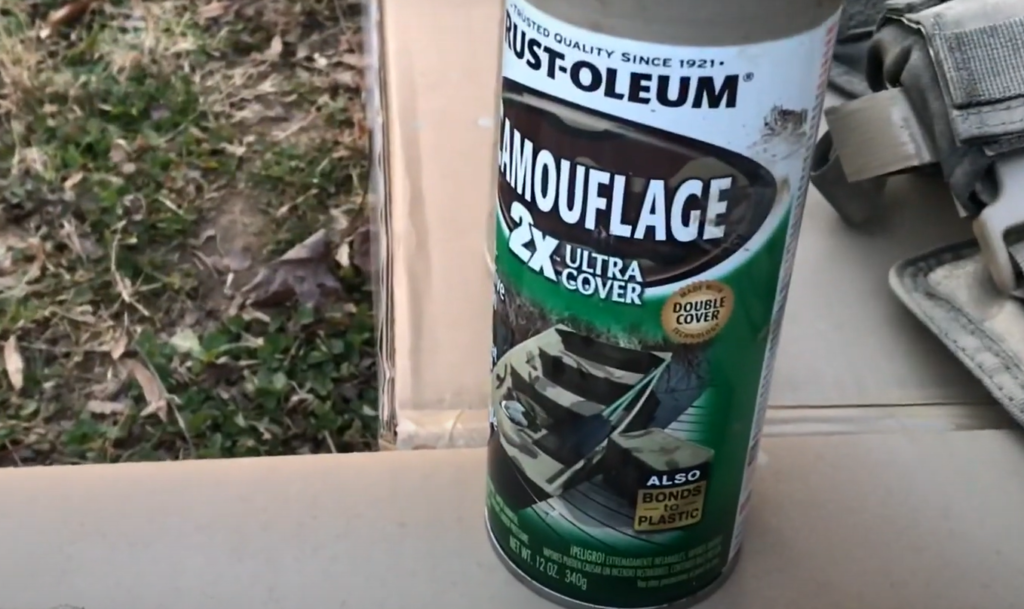
They can withstand movement and flexing without cracking or chipping. Camouflage spray paints for tactical gear are an excellent choice. They provide a non-reflective, ultra-flat finish that resists scratching and chipping. These paints come in various colors to match the environment where the plate carrier will be used. [1]
How To Spray Paint A Plate Carrier?
Spray painting a plate carrier requires multiple steps for a smooth and durable finish.
- Preparation: Start by cleaning your plate carrier thoroughly. Remove dirt, dust, or grease that could affect paint adhesion. Use warm water and a mild detergent, then let the carrier dry completely.
- Protection: Remove the armor plates and any other components that you do not wish to paint. You can also use painter’s tape or masking tape to cover portions of the carrier you want to leave unpainted.
- Priming: Though not mandatory, using a primer can help the paint adhere better and last longer. Spray the primer evenly across the carrier, ensuring all areas are covered. Let the primer dry fully before continuing.
- Painting: Shake the spray paint can for a few minutes before use to ensure the paint is well mixed. Hold the can about 10-12 inches away from the carrier and apply the paint in a steady, sweeping motion. Apply multiple thin coats instead of one thick coat. Let each coat dry before applying the next.
- Finishing: Once you’re satisfied with the coverage and color intensity, and the last coat of paint has fully dried, consider applying a clear protective topcoat. This will enhance the durability of the paint job and provide a protective seal against wear and tear.
How To Wash A Plate Carrier After Painting It
Washing a plate carrier after painting it requires specific steps to preserve the paint job and maintain the gear’s integrity.
- Wait for the Paint to Cure: Before washing your plate carrier, you must allow the paint to fully cure. Curing is different from drying, as it involves the paint hardening to its maximum strength. The curing time can vary depending on the type of paint used, but a general rule is to wait at least a week after the last coat was applied.
- Remove the Plates: Before washing, remove all armor plates and other detachable components to prevent them from getting wet.
- Use Mild Soap: Use a mild soap or detergent to gently clean the painted surface. It is advisable to refrain from using harsh chemicals or abrasives that may potentially harm the paint.
- Hand Wash: Gently scrub the painted area with a soft cloth or sponge. Avoid vigorous scrubbing as it might cause the paint to chip or peel off.
- Rinse and Dry: Ensure thorough rinsing of the carrier to completely remove any traces of soap, followed by allowing it to air dry fully. Avoid using a dryer or heat source to expedite drying, as this may cause the paint to crack.
- Periodic Maintenance: Regular inspection of the paint job can help identify any signs of wear or damage early on. If needed, apply touch-ups to keep your plate carrier in top condition. [2]
How Long Does A Plate Carrier Last After Painting It?
The lifespan of a painted plate carrier will largely depend on the type of paint used, the quality of application, and the conditions it’s exposed to.
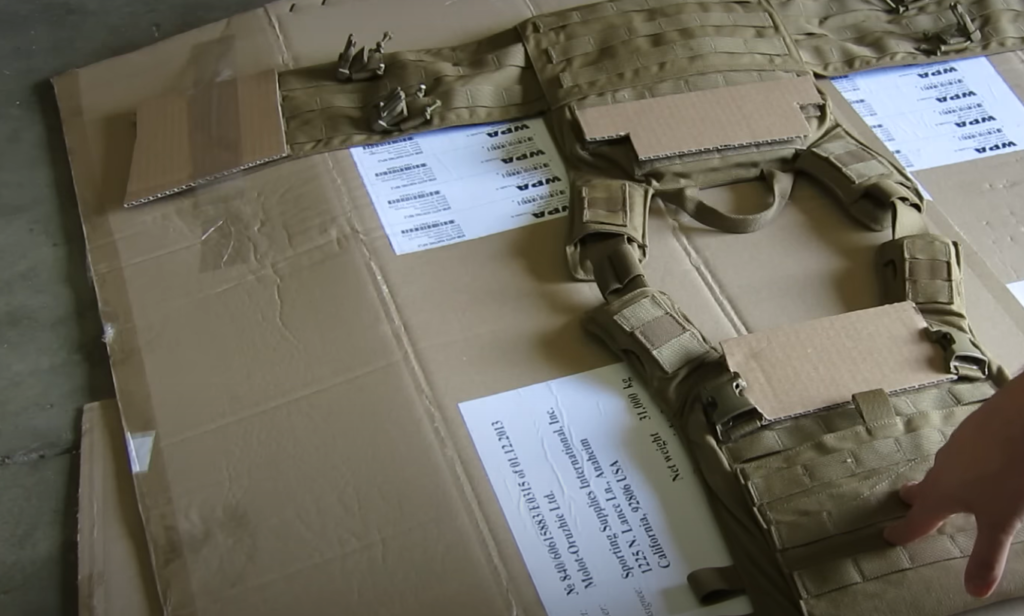
If high-quality paint is used, applied correctly with proper prep work and finishing, a painted plate carrier can last several years before needing a touch-up. However, harsh conditions, heavy use, or poor maintenance can shorten this lifespan significantly. It’s crucial to remember that the primary function of a plate carrier is protection, not aesthetics. While a well-maintained paint job can last for quite some time, the carrier’s durability and functionality should never be compromised for appearance.
Can You Spray Paint A Black Plate Carrier?
Yes, you can spray paint a black plate carrier. However, it’s essential to note that painting a darker surface may require some additional steps for the best result.
If you’re looking to paint a lighter color on the black carrier, it’s often recommended to first use a primer of a similar color to the paint you’ll be using. This could require multiple coats to ensure that the black does not show through. As always, remember to allow each coat to dry thoroughly before applying the next. Lastly, always test a small, inconspicuous area first to ensure the color and texture are to your liking. [3]Is Nylon Spray Paint Good For Plate Carriers?
Yes, nylon spray paint is often a good choice for plate carriers, especially if the carrier is made of nylon or a similar synthetic material. Nylon spray paint is designed to bond well with synthetic fabrics, providing a durable and long-lasting finish. It is also flexible, which is a key requirement for plate carriers that need to withstand movement and flexing. That said, not all paint brands are created equal. Be sure to pick a high-quality nylon spray paint, preferably one that is waterproof and UV-resistant for added durability. Lastly, always follow the manufacturer’s instructions for prep, application, and curing time to ensure the best results.
Tips for Spray Painting Plate Carrier
Spray painting a plate carrier can be a satisfying DIY project, but it requires careful preparation and execution. Here are some useful tips to make the process smoother and ensure a professional finish:
- Preparation is Key: Before you start painting, clean and dry your plate carrier thoroughly. Any dirt or grease on the surface can prevent the paint from adhering correctly.
- Choose the Right Paint: Use a paint that is designed for the material of your plate carrier. Nylon or fabric spray paint typically works well for most synthetic materials.
- Use a Primer: Applying a primer isn’t always necessary, but it can help the paint stick better and last longer. It can also help to bring out the true color of the paint, especially when painting over a dark color.
- Apply Multiple Thin Coats: Instead of one thick coat, apply several thin coats of paint. This will prevent paint runs and offer a smoother finish. Allow each coat to dry fully before applying the next.
- Take Your Time: Don’t rush the process. Allow plenty of time for each coat to dry and for the final paint job to cure. Rushing can lead to an uneven finish and could impact the durability of the paint job.
- Protect Yourself and Your Surroundings: Always use protective gear, such as gloves and a mask, and work in a well-ventilated area. Cover surrounding items and areas with drop cloths or old newspaper to protect them from paint overspray.
- Maintenance: Regularly clean and inspect your painted plate carrier for signs of wear or damage. Apply touch-ups as needed to keep it looking its best. [4]
FAQ
Can you spray paint Molle gear?
Absolutely, you can spray paint Molle gear. The process is similar to painting a plate carrier. Ensure the gear is clean and dry before starting, and choose a type of paint that is appropriate for the material of your gear, such as nylon spray paint for nylon Molle gear.
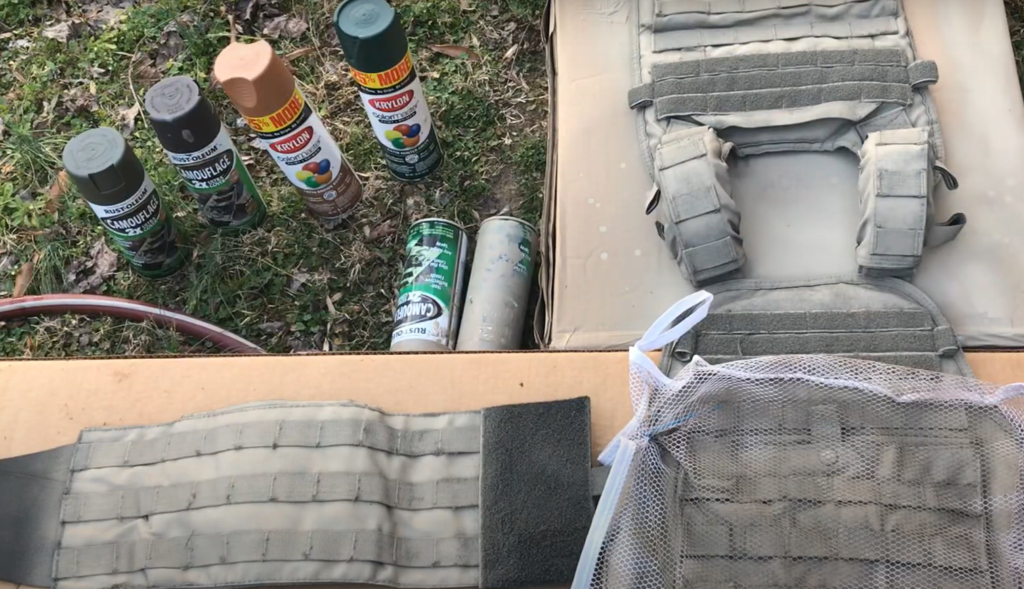
Applying a primer can help the paint adhere better and last longer. As always, apply the paint in multiple thin coats, allowing each coat to fully dry before applying the next. And importantly, remember to conduct regular maintenance and inspections of your painted Molle gear to check for any areas that may need a touch-up, which will help maintain the gear’s appearance and functionality over time.
Can I use spray paint on ceramic?
Yes, you can use spray paint on ceramic. However, it’s important to ensure the ceramic piece is clean and free of dust and grease before you begin. You may also need to lightly sand the surface with fine-grit sandpaper to help the paint adhere better. Depending on the color and texture you want to achieve, you might need to apply a primer first, particularly if you’re painting a dark ceramic piece with a light color. Once the primer is dry, you can apply the spray paint in several light coats, allowing each one to dry before applying the next.
How do you spray paint a metal rack?
Spraying painting a metal rack can be a straightforward task, but it requires careful planning and execution to get the best results. Here are the steps:
- Clean the Rack
- Sand the Rack
- Apply a Primer
- Paint the Rack
- Seal the Paint
- Allow to Cure
Remember, always paint in a well-ventilated area and protect surrounding surfaces from overspray.
What paint is safe to use on plates?
If you’re planning to paint on plates that will come in contact with food, it’s important to use food-safe paint. Acrylic paint marked as non-toxic and food-safe is a great option. These paints are free of harmful chemicals and safe for use on food contact surfaces.
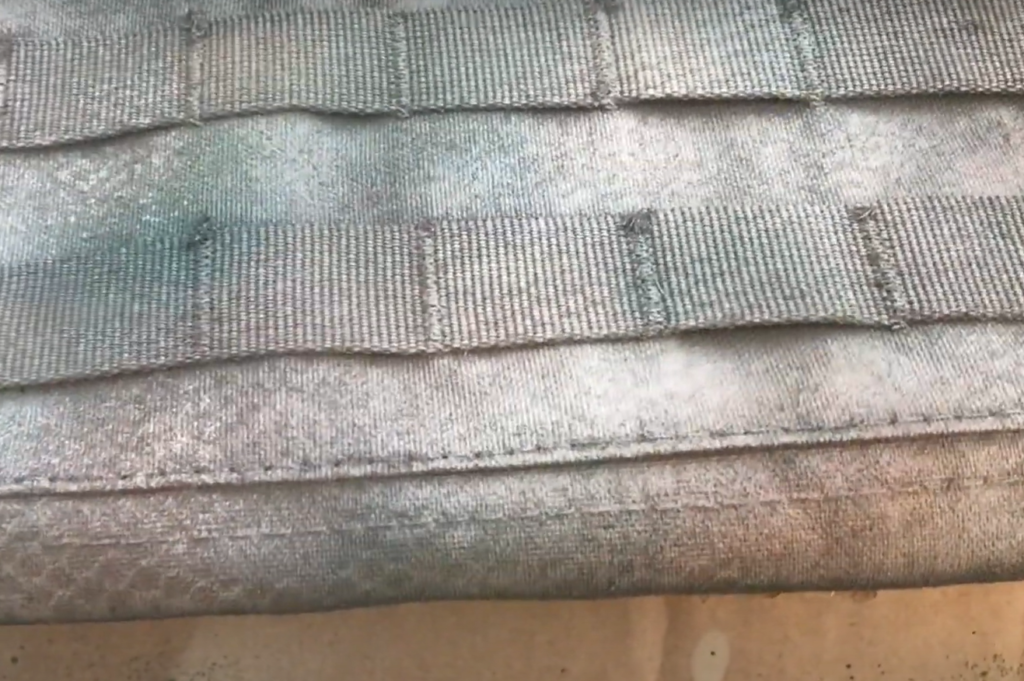
Remember, even food-safe paints should be used only on the plate’s rim or exterior, not on the eating surface. After painting, let the plates dry completely. To make the paint more durable and dishwasher safe, bake the plates in the oven according to the paint manufacturer’s instructions.
Does spray paint stick to cast iron?
Yes, spray paint can stick to cast iron, but it requires proper preparation to ensure durability. Start by cleaning the cast iron piece thoroughly to remove any rust, grease, or dust. Use a wire brush or sandpaper to remove loose rust and scale, and then wipe it clean with a damp cloth. Once clean and dry, apply a rust-inhibiting primer to protect against future rust. When the primer is completely dry, apply the spray paint in several thin coats, allowing each coat to dry before the next. The use of a sealant after the final coat of paint can offer extra protection and a glossy finish.
Does spray paint affect nylon?
Yes, spray paint can be used on nylon, but it requires some care to ensure a good result. Nylon is a non-porous, synthetic material that doesn’t absorb paint like cotton, and may require a fabric-specific spray paint. Begin by cleaning the nylon to remove any dust or dirt. Then, apply the paint in thin, even coats, allowing each coat to dry before applying the next. It’s important not to oversaturate the nylon, as this could cause the paint to crack or peel when it dries. A sealant spray can be used after the final coat of paint to help protect the color and extend the life of the paint job.
Can you spray paint nylon plastic?
Yes, you can spray paint nylon plastic, but it requires precise preparation and appropriate materials for an enduring and smooth finish. Here are the steps:
- Clean the Nylon Plastic
- Prime the Surface
- Paint the Object
- Seal the Paint
- Allow to Dry
Always remember to spray paint in a well-ventilated area and cover surrounding surfaces to protect them from paint overspray.
Can you spray paint Kevlar?
Yes, you can spray paint Kevlar, but it requires careful preparation and appropriate materials to ensure a durable and smooth finish. Follow these steps:
- Clean the Kevlar
- Prime the Surface
- Paint the Kevlar
- Seal the Paint
- Curing
Please remember to always spray paint in a well-ventilated area and protect the surrounding area from potential paint overspray.
Is enamel spray paint food safe?
Enamel spray paint is not typically food safe. While durable and easy to apply, it often contains chemicals that could leach into food upon contact, potentially posing health risks.
There are food-safe enamel paints available on the market, but these are usually not in aerosol format. Always follow the manufacturer’s instructions and let the paint cure completely before using the painted item with food. For the safest option, consider using paint only on the exterior of the item, keeping the parts that come into direct contact with food unpainted.What paint will stay on ceramic?
Ceramic surfaces can be effectively painted with either acrylic or enamel paints. However, to ensure a long-lasting finish, it’s crucial to prepare the ceramic surface properly. Begin by cleaning the ceramic thoroughly to remove any dirt or grease.
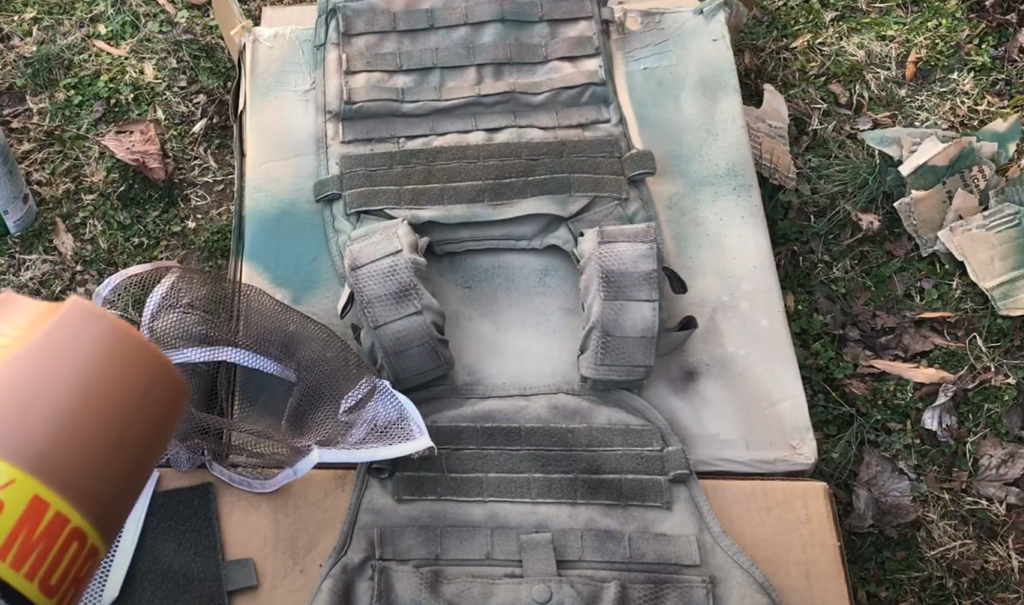
If the ceramic is glossy, lightly sand the surface with fine-grit sandpaper to help the paint adhere. After cleaning and sanding, apply a suitable primer to further improve adhesion. Once the primer is dry, apply the paint using thin, even strokes. Enamel paints generally provide a more durable finish, but acrylic paints come in a wider range of colors.
Useful Video: Painting Your Plate Carrier
Conclusion
In conclusion, spray painting various materials such as nylon, plastic, Kevlar, and ceramic is achievable with the right preparation, the correct type of paint, and patience. However, safety and health should always be your primary concerns, particularly when painting items that will come into contact with food. Always work in a well-ventilated area, protect surrounding surfaces, and follow the manufacturer’s instructions. Regular maintenance and checks are key to prolonging the life of your paint job.
References:
- https://www.hardshell.ae/plate-carrier/
- https://www.airsoftsociety.com/threads/is-painting-a-molle-vest-a-good-idea.138589/
- https://www.dayzrp.com/forums/topic/107808-coloring-plate-carriers/
- https://e-militaria.eu/16139-templars-gear-crusader-plate-carrier-roc-gen-4-ranger-green.html



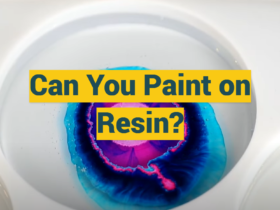
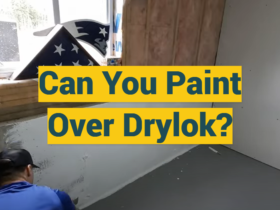
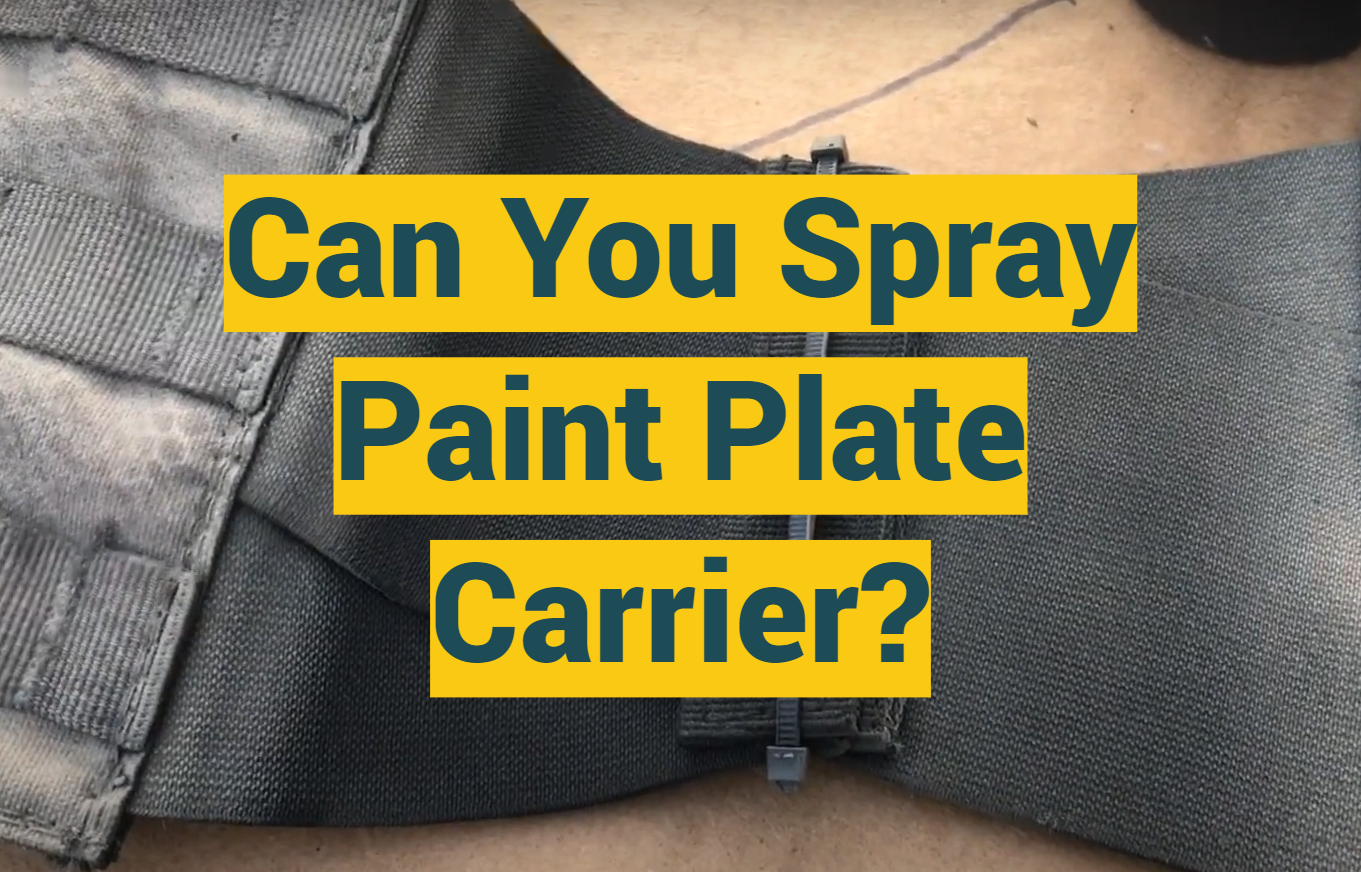




Leave a Review